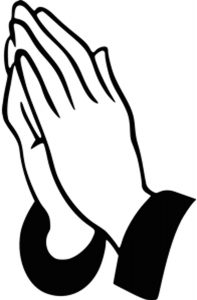Why We Pray with Folded Hands
By Raj & Krishan Gupta
SUGAR LAND:
Prayer in Latin is called Precari “to ask earnestly, beg, and entreat”. It is an invocation or act that seeks to activate a rapport with an object of worship through deliberate communication. Prayer is also a plea to God to support and help the devotee with whatever he or she is about to undertake or has done.
Though the origin of folding the hands at prayer is unknown, a version can be found by followers of many world religions. In Hinduism, mudras are used to receive and gather an alleged energy that is said to inhabit the universe.
While there are many different kinds of mudras, one of these called Anjali mudra prescribes bringing the palms of the hands together over the heart from the root Anj, ‘to adorn,’ ‘honor,’ and ‘celebrate.’ The hands held in union signify the oneness of an apparently dual cosmos, the bringing together of soul and matter, or the Self meeting the Self.
In Hinduism, many kinds of prayer have been incorporated from fire-based rituals to philosophical musings. While chanting involves ‘by dictum’ recitation of timeless verses or verses with timings and notations; concentration involves deep meditation on the preferred deity/God. The object of prayers could be a person referred as Devta, Trinity or incarnation of either Devta or simply plain formless meditation as practiced by the ancient sages.
Prayers can be directed to fulfilling personal needs or deep spiritual enlightenment, and for the benefit of others. Ritual invocation was part and parcel of the Vedic religion and as such permeated their sacred texts. Vedas are the highest sacred texts, having a large collection of mantras and prayer rituals. We may pray to the highest absolute God Brahma, preserver God Vishnu and destroyer God Shiva.
Why do we fold hands and close our eyes in front of God while praying? There are valid scientific reasons behind it. Historians also say the gesture of praying with folded hands comes from the idea of a shackled prisoner’s hands with rope which came to symbolize submission.
In ancient Rome, a captured soldier could avoid immediate death by joining the hands together. Just as waving a white flag today, the message was clear. “I surrender.” Subjects demonstrated their loyalty and paid homage to their rulers by joining their hands. In time, clasping the hands together communicated both an acknowledgement of another’s authority and one’s own submission to that authority.
There is a left-side and right-side polarity of the body. The right hand constitutes positive energy and left hand negative and when we fold our hands the electromagnetic field of the body becomes neutral which creates a reflex action in the nerves, ultimately resulting in the secretion of the pituitary gland. This creates a resonance rhythm in the brain which creates a state of meditation. Hindu mythology is based on scientific angles and there is a good reason behind each and every step that we follow in our rituals.
In conclusion we can win the heart of millions of people with folded hands. The gesture is a symbol of obedience, submission, sincerity and repentance. When we fold our hands in prayer, we are symbolically communicating with respect and honor to God, pledging to Him our fidelity and loyalty and requesting guidance to fulfill our true purpose on earth, to ensure that when our soul leaves our physical body, that we bring “home” the experiences and learnedness that was expected of us during our time on earth.
God doesn’t care how we pray – if we are standing, sitting, lying down, or kneeling. The most important thing we can do every day is to pray — talk to God and tell Him our troubles, share our gratitude and your prayer will be heard without any reservation.

